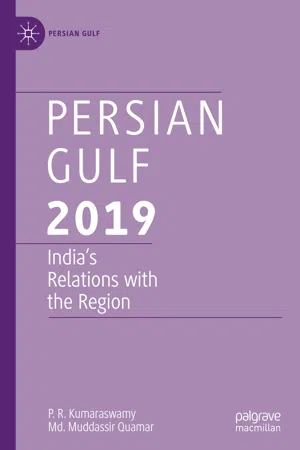Regional Political Challenges
The year 2018 faced several regional challenges such as continuing intra-Gulf Cooperation Council (GCC) tensions, domestic instability and growing social cleavages and unrest in some. However, Iran continues to dominate the regional scenario. Indeed, since the end of the Cold War, India has spent considerable effort in developing and sustaining a fruitful relationship with the Islamic Republic of Iran. Despite the ideological differences over the clergy-dominated political order, since the 1990s various Indian governments have reached out to Iran and sought to explore closer ties with it. Since the visit of President Hashemi Rafsanjani in May 1995, there were three state visits from India and two from the Iranian side. At the same, Iran’s troubled relations with the outside world, especially with the US, have been a stumbling block in both countries progressing to the fullest extent of their interest convergence.
Iran and JCPOA
The arrival of Donald Trump in the White House has made matters worse. In line with his campaign rhetoric, on 8 May 2018, President Trump announced the unilateral US withdrawal from the Joint Comprehensive Plan of Action (JCPOA ) or the Iran nuclear deal concluded in July 2015.1 Though the move was not surprising as Trump had made his intentions clear since his inauguration in January 2017, his decision to walk away from a carefully and painfully crafted international agreement put the regional dynamics in the Persian Gulf out of gear. The move not only puts Iran on notice for its regional ambitions but also creates trouble for other parties to the JCPOA, namely, the UK, Germany, France, Russia and China who see the nuclear deal as the best way to deal with Iran and its regional ambitions.2
Besides the withdrawal, the US decided to reimpose unilateral economic sanctions against Iran and introduce new ones. These were directed at the Iranian oil industry, which forms a significant sector of the Iranian economy, to curtail its oil exports to any country. Initially, the Trump administration announced a conditional waiver for some countries for six months, which it said would not be renewed. However, on 5 November, eight countries including India3 were given a 180-day waiver for imports from Iran, beyond which they would have to stop their imports completely.4 Under this waiver, India had reportedly agreed to restrict its monthly oil import from Iran up to 1.25 million tons. The sanctions on the oil industry made trading with Iran and countries which depend upon Iranian oil such as China, Japan, South Korea and India in a precarious situation.
In the light of the American withdrawal from the JCPOA and the reimposition of unilateral sanctions, one could visualize four possible scenarios. Firstly, despite the commitment of all other parties, including Iran, the nuclear deal is dead. While the US involvement and backing were crucial for its conclusion, Iran is unlikely to adhere to its commitments in the ...
